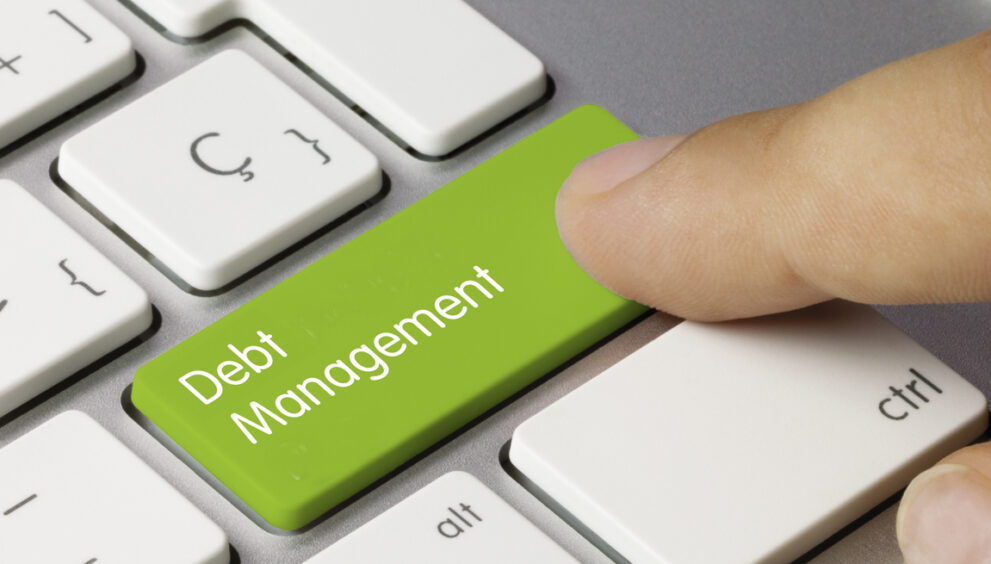The Secrets of Mastering Debt Management

Debt management can be a tricky and intimidating process, but it doesn’t have to be. With the right tools and strategies, you can gain control of your debt and achieve your financial goals. In this article, we’ll provide the necessary knowledge and confidence to successfully manage their debt. By following the steps outlined in this article, you will be able to take charge of your future and make progress toward achieving the life you want for yourself.
Understanding Your Finances
Understanding your finances is a critical step to managing debt. When it comes to debt, there are two types:
- secured.
- unsecured.
Secured debt involves assets such as a home or car, where the lender can take possession of the asset if the loan isn’t repaid. Unsecured debt doesn’t involve any assets and typically includes credit cards, medical bills, and personal loans.
Your credit score is another important factor in managing debt. Credit scores are based on data from your credit report and show lenders how likely you are to pay back money that you borrow. Improving your credit score can be done by making regular payments on time, reducing your overall debt load, and limiting applications for new credit cards or loans.

It’s also important to understand the terms of any existing loans you have taken out. This includes understanding the interest rate, repayment terms, fees associated with missing payments (such as late fees), and other processing fees. Knowing these details will help ensure that you stay in control of your finances and avoid unnecessary costs.
Setting Financial Goals
Setting financial goals is a crucial step in mastering debt management. Establishing clear and realistic goals gives you something to work towards and can provide motivation when progress seems slow. When setting financial goals, it’s important to take into account your current financial situation, income level, debts, expenses, and other factors.
The first step in setting financial goals is to evaluate your current situation. This involves looking at your income, expenses, and debts to create a realistic budget. It’s also important to set up an emergency fund so that you’re prepared for any unexpected costs that may arise.
Once you’ve evaluated your current situation, you can start creating both short-term and long-term goals. Short-term goals might include paying off a certain amount of debt within a certain period or saving up for an upcoming purchase. Long-term goals might involve eliminating all debt or achieving financial freedom by building up enough assets to cover all expenses without needing to work.
Creating a Budget
Creating a budget requires tracking spending with budgeting apps or software. This may include tracking income, expenses, investments, and other financial goals. Once the reader has a better understanding of their finances, they should develop a debt repayment plan that is realistic and achievable.
When creating a budget it is important to prioritize needs over wants and stick to it as much as possible. This may include creating an emergency fund for unexpected costs such as medical bills or car repairs. It is also essential to make sure the debt repayment plan is not too restrictive so the reader can stay motivated in pursuing their financial goals.
In addition, readers should consider taking advantage of balance transfer credit cards or debt consolidation loans to reduce interest rates on existing debts and save money in the long run. Finally, readers should seek out credit counseling services if needed for additional support when managing their debts. With these steps, readers will gain the knowledge and confidence necessary to master managing debt and reach their financial goals successfully.
Utilizing Debt Managing Tools
Navigating debt can be an overwhelming task, but luckily there are a variety of debt-managing tools to help readers take control of their finances. Credit counselors provide helpful advice tailored to each individual’s situation, while balance transfer credit cards allow consumers to move high-interest debt from one card to another. Debt consolidation loans offer the opportunity to pay off multiple smaller debts with a single payment and often have lower interest rates and fees than other options. Finally, debt management plans to provide an organized system where people make one payment per month in exchange for reduced interest rates and other benefits.

Before utilizing any of these tools, readers need to research the terms and conditions associated with them as well as the potential risks that may be involved. For instance, closing old accounts or taking out new loans can both come with consequences that must be taken into account when making decisions about how best to manage debts.
Staying Focused on Your Financial Goals
Setting and staying on track with your financial goals can be a challenge, but it is possible. To stay focused on your goals, it’s important to regularly review your budget and progress. Set reminders to check in with yourself every month or two this will help keep you motivated and accountable.
Focus on paying off high-interest debt first as this will reduce the total amount of money spent on interest payments over time. Towards the end of each billing period, if there is extra money left over after all bills have been paid then consider paying extra towards loan principal instead of saving it away as this will further reduce interest costs overall.
In conclusion, mastering debt management requires discipline and focus. With the right approach, individuals can create a budget, take advantage of balance transfer credit cards and debt consolidation loans, and access credit counseling services for additional support. Through consistent effort and dedication, individuals can make progress toward long-term financial stability and reach their goals.


























































































































































































































































































































































































































































































































































































































































![Fixing [pii_email_aa0fea1a78a192ae7d0f] Microsoft Outlook Error](https://www.huffenpost.com/wp-content/uploads/2023/03/What-Causes-the.jpg)
![Fixing [pii_email_aa0fea1a78a192ae7d0f] Microsoft Outlook Error](https://www.huffenpost.com/wp-content/uploads/2023/03/How-to-fix-the-1-1024x1024.webp)
![Quick fixes for the [pii_email_dbd9dd084703ead3b9cf] Mail Error](https://www.huffenpost.com/wp-content/uploads/2023/03/How-to-Avoid-pii_email_b6b14f95f44a83737071-Outlook-Error-1024x576.jpg)
![How to fix the [pii_email_bbf95bff57a974a71da8] in Microsoft Outlook?](https://www.huffenpost.com/wp-content/uploads/2023/03/How-To-Solve-The-pii_email_9e750e335dfd9d75badb-Outlook-Error.webp)
![How to solve the [pii_email_b6b14f95f44a83737071] Outlook Error](https://www.huffenpost.com/wp-content/uploads/2023/03/How-to-Avoid-pii_email_b6b14f95f44a83737071-Outlook-Error.png)
![Ways to fix the "[pii_email_1fb861393abed78ab415] Error](https://www.huffenpost.com/wp-content/uploads/2023/03/pii_pn_56e685559f213991c933-Error-Causes-and-Solutions2.jpg)
![How to Fix the [pii_email_e2f55b4aa7bb667da6d9] Error](https://www.huffenpost.com/wp-content/uploads/2023/03/How-to-fix-the.webp)
![What Everyone Should Know About [pii_email_59ea919492dfc2762030]](https://www.huffenpost.com/wp-content/uploads/2023/03/pii_email_aa0fea1a78a192ae7d0f-Email-Error-and-Its-Solutions-1024x683.jpg)
![How to Fix the [pii_pn_5359771d15a46e7b88bf] Outlook Email Error](https://www.huffenpost.com/wp-content/uploads/2023/03/pii_email_57a4a2f20ec6813a8481-SMTP-Error-Solution-2.jpg)


























































































